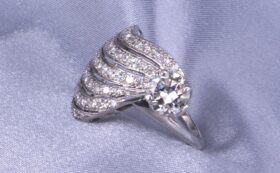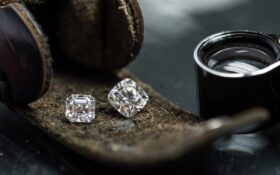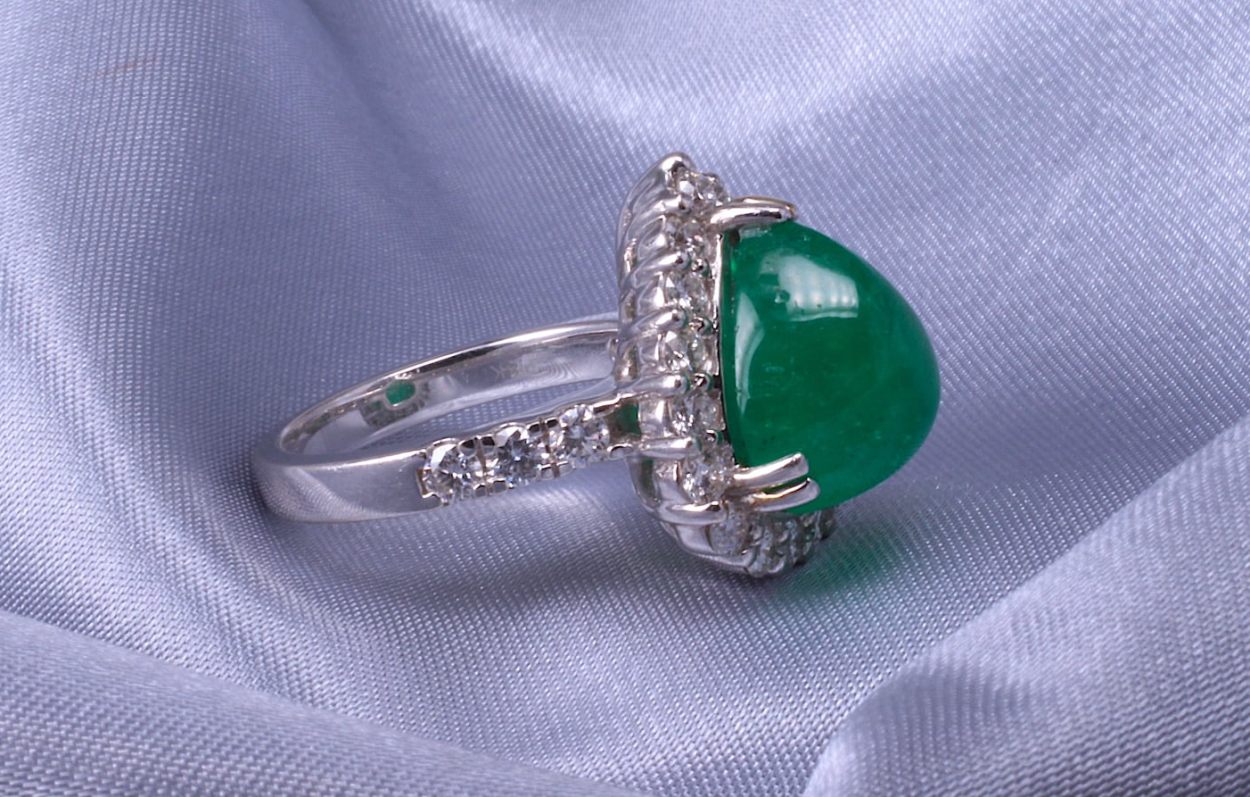
03 Nov All About Gemstone Treatments
At C. Blackburn Jewelers of La Jolla, we deal with high quality gemstones every day: from large carat diamonds to precious colored gemstones like emeralds, rubies, and sapphires. When it comes to evaluating a gemstone’s quality, most jewelry lovers know about the 4Cs (Cut, Color, Clarity, and Carat Weight). But, it is also important to be aware of what (if any) treatments have been made upon the stone.
So, what are “gemstone treatments”? This term refers to any process, other than polishing and cutting, that alters or improves the color, clarity, or the durability of a gemstone. Early evidence of gemstone treatments dates back as early as 1300 BCE, to the discovery of heated carnelian in the tomb of King Tutankhamen. Written accounts from almost 2000 years ago detail early treatments that are still virtually identical to some techniques still in use today.
Treatment processes vary by gemstone, and can include heating, dyeing, irradiation, oiling, and other processes. Most gemstones in fine jewelry have been treated in some way, so you shouldn’t be concerned simply because a gemstone has been treated. However, certain treatments are more accepted than others, so a San Diego jeweler should tell you exactly what treatments have been done to the stone. If the gemstone is a rare, “untreated” gemstone, then expect to pay a high premium.
Let’s review the main gemstone treatments you are likely to encounter when visiting a La Jolla jewelry store.

Heat Treatment of Gemstones
Heat treatment is one of the oldest and most common gemstone treatments, and one of the simplest. The stone is heated to near 1600 degrees celsius, causing inclusions, impurities, and other chemical imperfections to reform themselves and change the color of the stone.
The color change varies with the gemstone, with some gems becoming lighter, some darker, or some changing color completely. Minerals like tourmaline, zircon, topaz, and aquamarine are often heated to remove unwanted colors, or enhance favored ones.
In sapphires, heat treatment can intensify or even induce their blue coloration, but it may also dissolve rutile silk inclusions, which improves both color and clarity. In some cases, the silk inclusions can recrystallize, resulting in a stronger asterism, or ‘star’ effect.
Rubies are routinely heat treated to remove a purplish coloration and render a more pure red color. Heating rubies can also remove minute, needle-like ‘silk’ inclusions, causing them to appear more opaque and lighter in tone.
While heat treatments are generally not detectable in most gemstones, like tanzanite, aquamarine, and citrine, they are easily detected by jewelers in rubies and sapphires.
It is estimated that 95% of all sapphires and rubies are heat treated in some way. So, untreated rubies and sapphires command a high premium, and any untreated ruby or sapphire should be certified as such by your San Diego jeweler.
Heat treatments of all gemstones are widely accepted in the industry, and generally considered permanent and durable, though some stones may become more brittle and slightly more prone to damage.
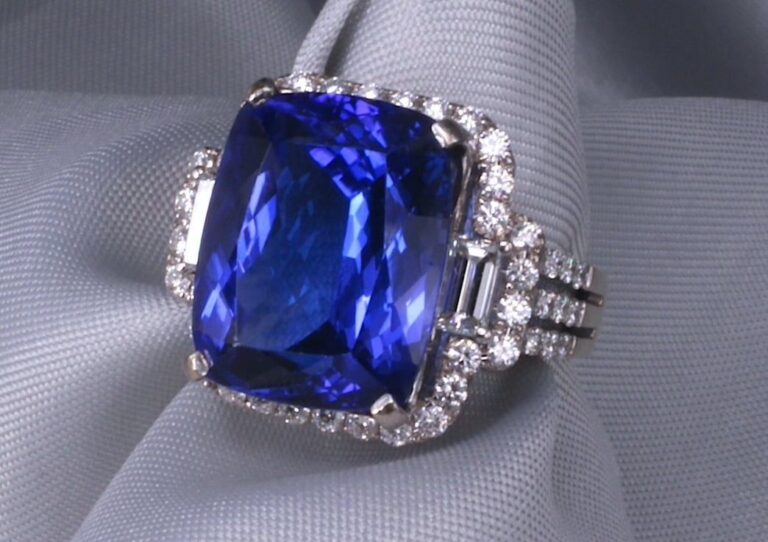
Fracture or Cavity Filling Treatment
Another common treatment for gemstones is cavity or fracture filling, which is simply the filling of surface reaching fissures with glass, resin, wax, oil, or other material. When small cracks or fractures reach the surface of a gemstone, they interrupt the passage of light through the stone, resulting in “dead” spots in the color.
By filling these cavities with material that allows light to pass through, clarity and color is enhanced, and the appearance of inclusions can be diminished. The durability and stability of the stone is also increased, and in some cases, weight is added. Small fissures that are filled are often difficult to detect, though commonly filled stones are easily seen by the trained eye.
Diamonds are among the most commonly fracture-filled gems, with surface reaching fractures being filled with high lead-content glass. While the fracture remains, its appearance is simply less evident. These filled fractures are usually evident under magnification.
Emeralds are one of the most heavily included gemstones, often with surface breaking fissures, and as such are generally treated to improve their clarity. The traditional way to treat these fissures is to use heat and pressure to fill them with cedar oil. Once cooled, the cedar oil becomes nearly solid, and allows light to pass though much in the same way it does the stone itself.
Traditional oiling is considered stable but not permanent, as hot water or strong cleaners can remove the oil. Other materials, including waxes, epoxies, and prepolymers are sometimes used to treat emeralds.
Rubies are also prone to surface-reaching fissures, and are often treated by filling the cracks with glass to lessen their visibility. In some instances, the amount of glass filler used can be substantial. It is important with all cavity filling treatments that both the nature and the amount of filler be disclosed, because filled gemstones can be damaged by exposure to heat, extreme temperature changes, and changes in air pressure (like the cabin of an airplane).

Dyeing Gemstones
Dyeing is one of the oldest treatments known, and involves introducing colored dyes into fractured or porous gems to enhance or change their color. Occasionally, fractures are purposely created in a stone to allow the dye to be more thoroughly accepted.
Some gems, like pearls, may be simply soaked at room temperature for an extended period, or with low heat. The dyes themselves vary greatly, from natural, organic pigments to chemical salts, and they vary in their ability to penetrate as well.
Some dyes will simply color the the surface and care must be exercised when cleaning as the dye may be removed, but other dyes are considered permanent and stable. Besides pearls, other commonly dyed gemstones include turquoise, lapis lazuli, howlite, chalcedony, quartz, emeralds, and rubies.
Qualified gemologists can detect dyed gems in most cases, and the only special care they need is to avoid contact with chemicals which might dissolve the dye.
Irradiation of Gems
Irradiation involves subjecting a gem to an artificial source of radiation in order to change its color. Irradiation is often followed by heat treatment to further modify the color.
Although many types of gemstones are irradiated, colored diamonds and topaz are the most common. Some irradiated gems’ color can fade with exposure to strong light, and colored diamonds in particular can be damaged by excessive heat.
High Pressure, High Temperature (HPHT) Treatment
Used exclusively for diamonds, HPHT treatments can actually alter the atomic structure of some types of diamonds, and remove or diminish brownish colors. In some cases, the brown colors can be altered to yellow, yellowish green, or blue by the process. HPHT treatments are considered stable and permanent, and they can be difficult to detect, even by an experienced La Jolla jeweler.
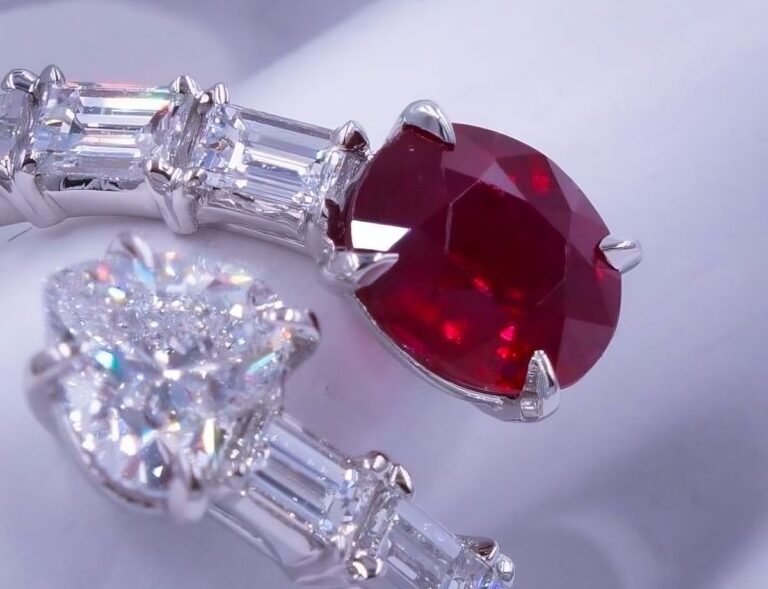
Buy or Sell Gemstone Jewelry in San Diego
If you would like to shop for precious gemstone jewelry in San Diego, or sell an item from your fine jewelry box, contact C. Blackburn Jewelers in La Jolla today. At our boutique jewelry store, we provide custom jewelry design and estate jeweler services.
Our owner Carl Blackburn is a 2nd generation California jeweler. He is one of the most well-known San Diego jewelry designers and estate jewelry buyers in the county. Call us at 858-251-3006 to schedule an appointment at our jewelry store in La Jolla by the Sea. You can also send us an email via the contact form below.


